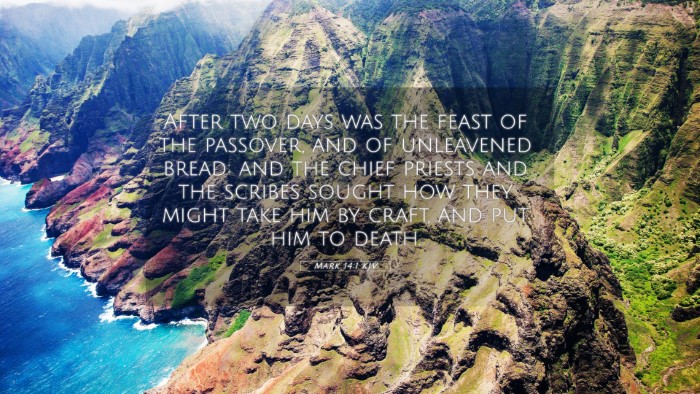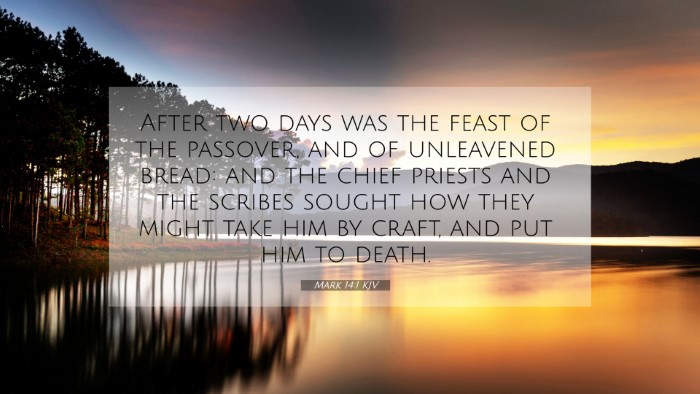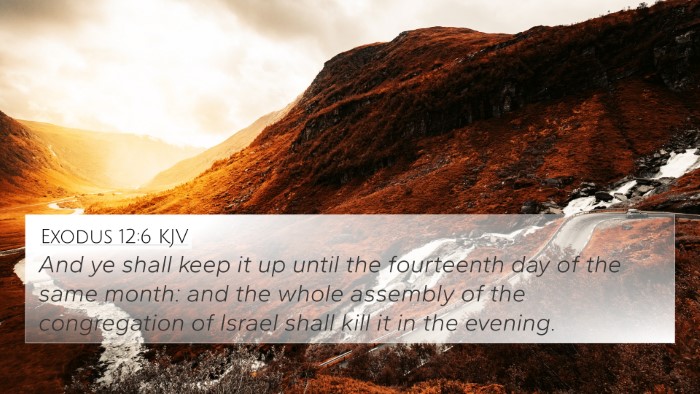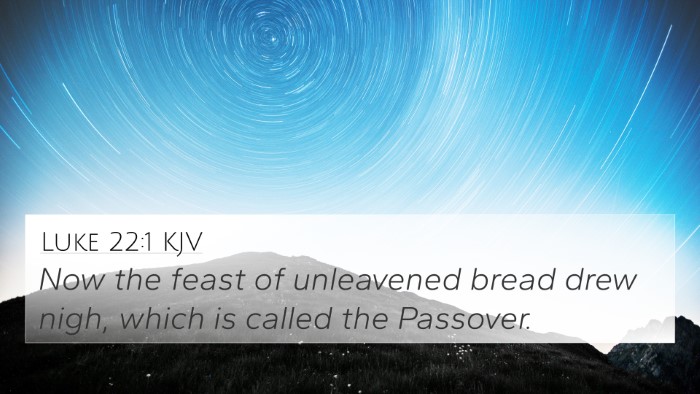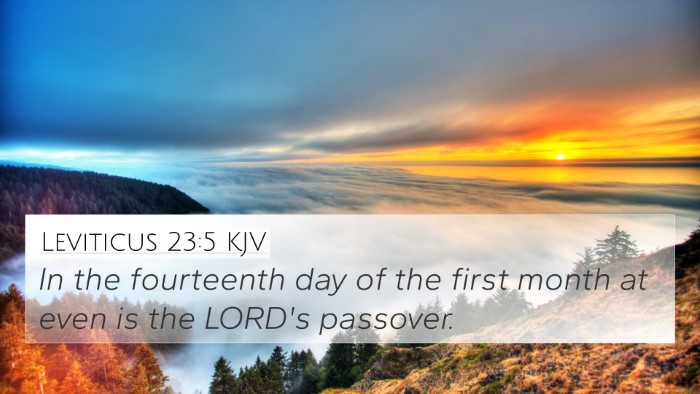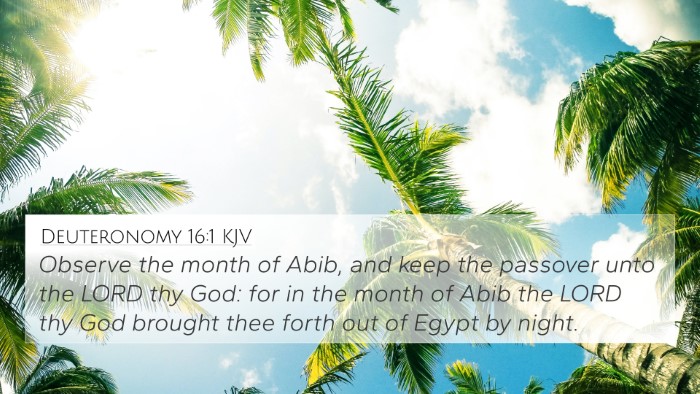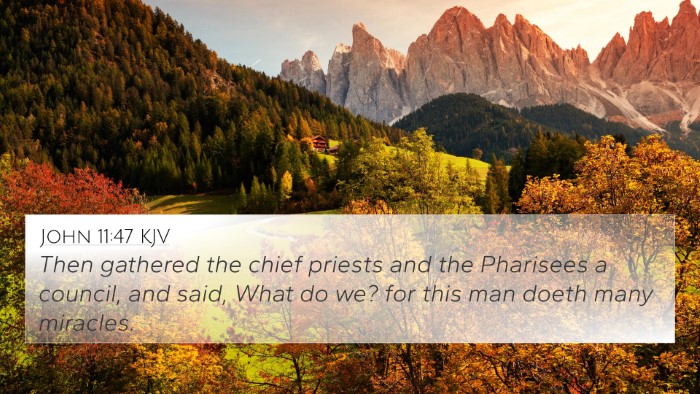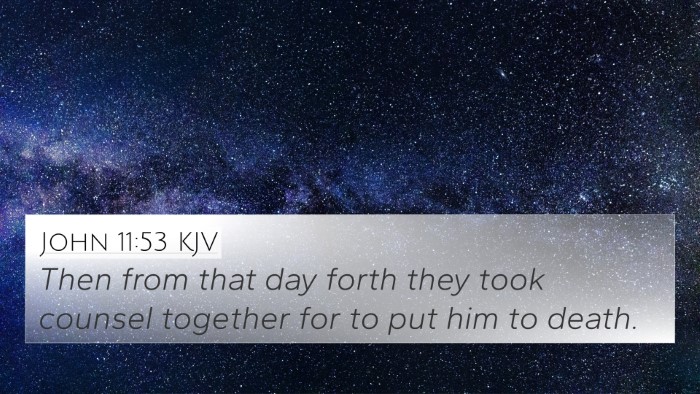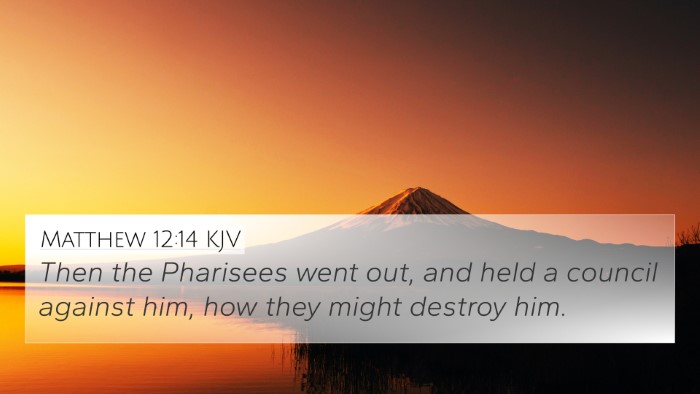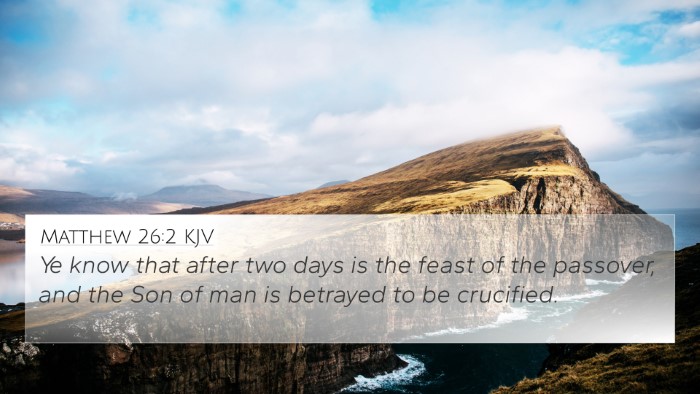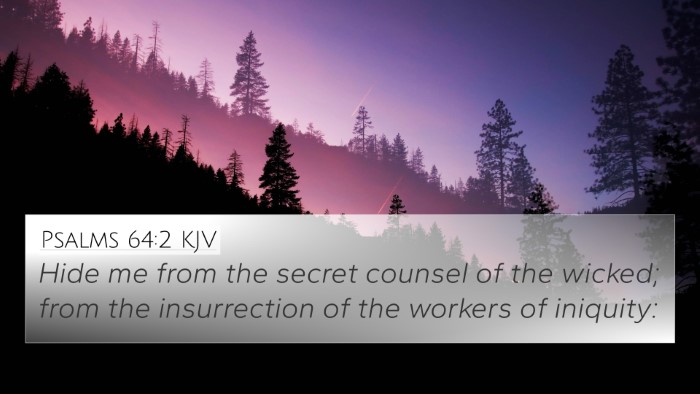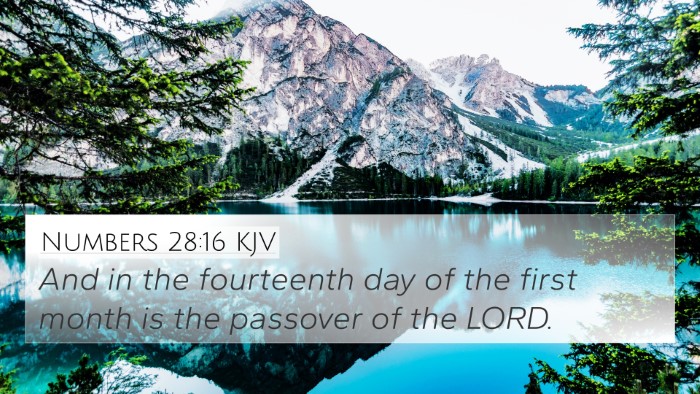Meaning and Interpretation of Mark 14:1
Mark 14:1 states, "After two days was the feast of the passover, and of unleavened bread: and the chief priests and the scribes sought how they might take him by craft, and put him to death." This verse is situated in the context where Jesus is nearing his crucifixion, and it foreshadows the events leading up to his arrest and the subsequent trials.
Contextual Analysis
Mark 14:1 occurs just before the pivotal events of the Passion narrative. Public Domain Commentaries shed light on several key themes that arise from this verse:
- Timing of Events: The mention of the feast of Passover and unleavened bread indicates a significant timeframe in the Jewish calendar, which was rich with historical and socio-religious implications.
- Conspiracy Against Jesus: The verse highlights the motivations of the chief priests and scribes, showcasing their intent to eliminate Jesus through deceitful means.
- Fulfillment of Prophecy: This passage connects to Old Testament prophecies concerning the Messiah's suffering, reflecting the divine plan for redemption.
Commentary Insights
Various commentaries provide a deeper understanding of Mark 14:1, including:
- Matthew Henry: He emphasizes the treachery of the religious leaders, noting their desire to maintain power and control over the people. Henry points out that their motives were driven by envy and fear of losing influence.
- Albert Barnes: Barnes explores the significance of the timing, noting the Passover as a time of liberation commemorated by the Jews, contrasting with the impending bondage that Jesus would face from the authorities.
- Adam Clarke: Clarke elaborates on the cultural significance of the Passover, grounding the reader in the historical context in which this event transpires. He calls attention to the prophetic dimensions of Jesus’ impending death during this holy festival.
Bible Cross-References
Mark 14:1 can be cross-referenced with the following verses to enrich the understanding:
- Exodus 12:1-14: Discusses the origins of the Passover.
- Matthew 26:2: Similar account of the plot against Jesus.
- Luke 22:1-2: Further elaboration on the conspiracy against Jesus.
- Isaiah 53:3-5: Prophetic insight into the suffering of the servant.
- John 11:53: Illustrates the council's decision to kill Jesus.
- Psalms 2:1-2: Reflects on the rebellious thoughts of the leaders.
- Mark 14:10-11: Speaks directly to Judas Iscariot's betrayal.
Thematic Connections
This verse can lead to deeper thematic connections across the Bible, such as:
- Redemption: The significance of Jesus' sacrifice during Passover parallels the liberation from sin.
- Betrayal: The actions of the chief priests echo themes of betrayal present in the Gospels.
- Divine Sovereignty: Shows God’s plan unfolding through human actions.
Conclusion
Mark 14:1 serves as a critical moment within the Gospel narrative, encapsulating the tensions that lead to the crucifixion of Christ. Through careful analysis of this verse in conjunction with cross-referenced scriptures, we gain a richer understanding of its significance within the broader biblical context.
For further study on how to find cross-references in the Bible or to engage in a comprehensive Bible cross-reference study, consider utilizing tools such as a Bible concordance or a cross-reference Bible study guide.

